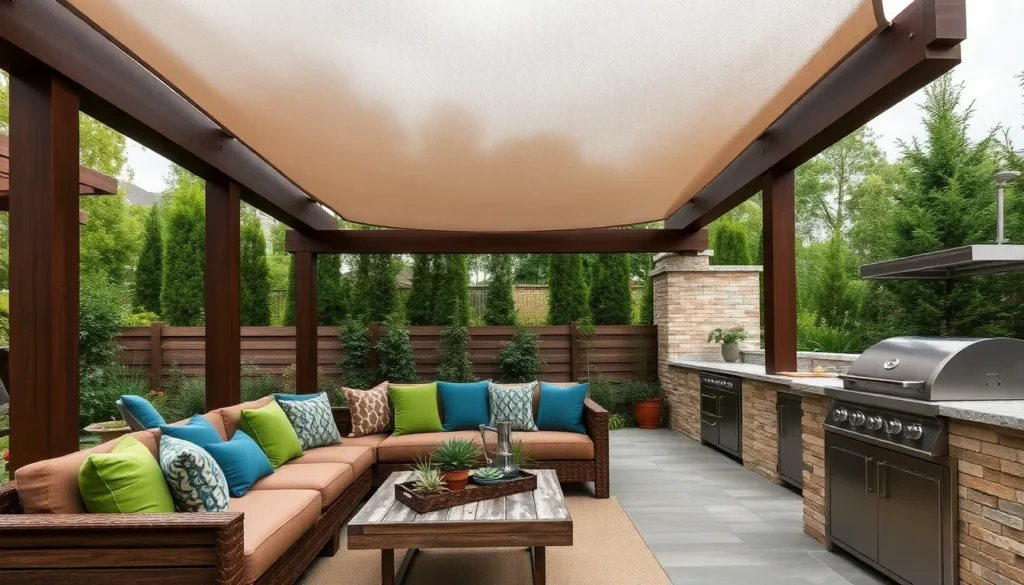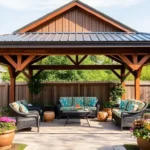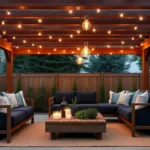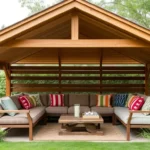Transforming your patio into a haven that welcomes you even on the rainiest of days is not just a dream—it’s an attainable reality. Whether you’re new to outdoor design or a seasoned enthusiast, creating a covered patio offers the perfect blend of comfort and functionality, allowing you to enjoy the soothing sounds of rain while staying dry and cozy. The right design can redefine your outdoor space, turning it into a natural extension of your home where memories are made year-round.
In this article, you’ll discover 15 innovative covered patio designs that cater to every taste and budget. From sleek modern structures to charming rustic retreats, each option is tailored to inspire and guide you through the process of selecting the perfect shelter, materials, and decor. By the end, you’ll have a clear vision and actionable steps to create your ideal outdoor sanctuary, ensuring that not even a rainstorm can dampen your outdoor enjoyment.
Choosing the Right Patio Cover

When choosing the right patio cover for rainy days, consider the **material’s durability and weather resistance**. Materials like aluminum and polycarbonate are excellent choices as they provide robust protection against rain and are easy to maintain. For a more natural look, treated or composite wood can add warmth and elegance, but ensure it’s sealed properly to withstand moisture. A basic tip for beginners is to measure the area accurately, allowing for at least a foot of overhang to offer adequate coverage and prevent water from dripping onto the patio edges.
Incorporating design elements like **adjustable louvers or retractable canopies** can add versatility to your patio shelter. These features allow you to control the amount of sunlight while providing shelter from the rain. For those looking to add a touch of sophistication, consider integrating a built-in gutter system to efficiently manage rainwater runoff. Advanced gardeners might explore custom designs with integrated lighting or heating elements to make the patio usable year-round. Always ensure the structure is securely anchored, particularly in windy areas, to maintain safety and longevity.
Waterproof Pergola Designs
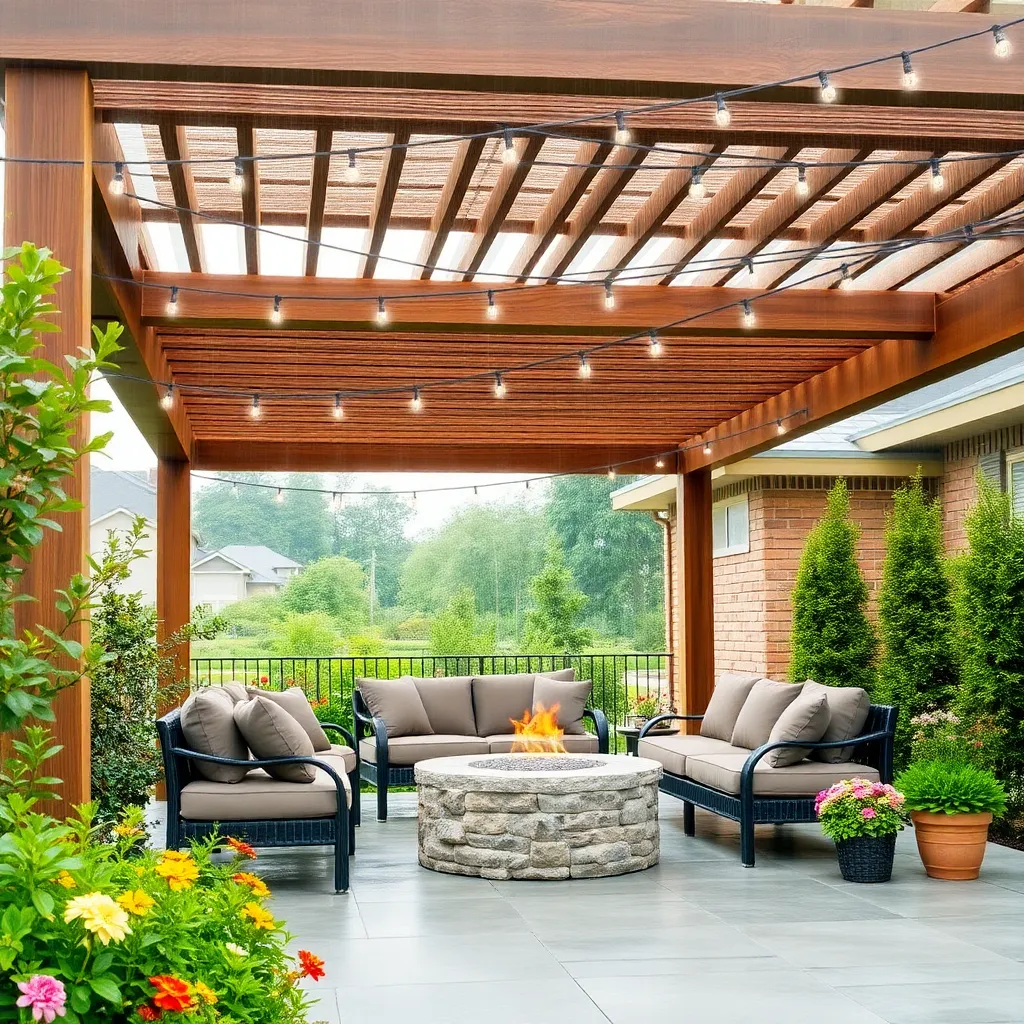
Transforming your patio with a waterproof pergola can create a cozy haven for rainy days. To ensure durability, consider using materials like powder-coated aluminum or treated wood with a waterproof sealant. These materials resist moisture and offer longevity, making them excellent choices for outdoor structures. For added protection, integrate a retractable canopy or fixed polycarbonate roof panels. These will not only shield your patio from rain but also allow flexibility in adjusting light levels as per your preference.
For those looking to enhance the aesthetic appeal of their pergola, incorporating climbing plants such as wisteria or ivy can add a touch of nature while providing additional shelter from the elements. Ensure your pergola is designed with proper drainage and slope to prevent water pooling, which could damage the structure over time. For added convenience, consider installing gutters with downspouts to direct rainwater away efficiently. By following these practical steps, you can create an inviting outdoor space that remains functional and beautiful, regardless of the weather.
Stylish Awnings for Wet Weather

For a stylish yet functional addition to your patio, consider installing awnings that offer excellent protection from wet weather. Awnings come in various materials, such as durable acrylic or waterproof polyester, which are ideal for rainy climates. Opt for retractable awnings to offer flexibility; they can be extended during rain showers and retracted when not needed, preserving their longevity. Look for models with a slight pitch to ensure water runoff, preventing pooling and potential damage.
When selecting an awning, consider colors and patterns that complement your outdoor decor, enhancing both form and function. For a more advanced approach, consider motorized awnings with built-in sensors that automatically retract during high winds, offering added protection. Ensure the frame is made from rust-resistant materials like aluminum or powder-coated steel for durability. For DIY enthusiasts, installing an awning can be a weekend project with the right tools and instructions, providing both instant shelter and a stylish upgrade to your patio.
Transparent Roofs for Natural Light
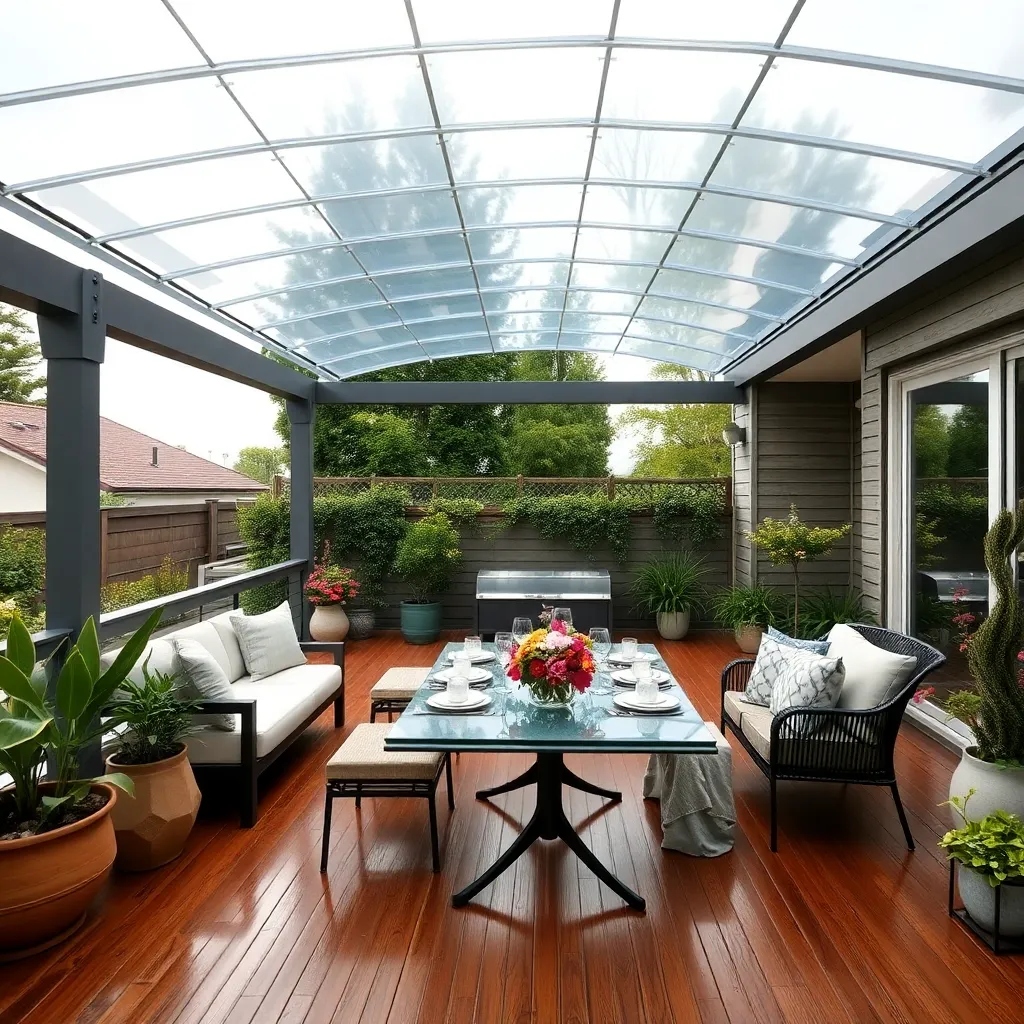
Incorporating a transparent roof into your patio design allows for maximum natural light while keeping the space protected from the rain. Consider using materials like polycarbonate or tempered glass, which are both durable and offer excellent light transmission. Polycarbonate sheets are lightweight, UV-resistant, and can be easily cut to fit any patio shape, making them a versatile choice for DIY enthusiasts. For a more polished look, tempered glass provides a sleek, modern aesthetic but requires professional installation due to its weight and handling complexity.
For those looking to add a touch of style, consider integrating framed sections or decorative elements such as wooden beams or metal grids beneath the transparent roof. These not only enhance the structure’s visual appeal but also provide support and stability.
- Ensure the roof pitch is at least 10 degrees to allow for efficient water runoff.
- Install gutters and downspouts to manage rainwater effectively.
Whether you’re a beginner or an experienced DIYer, choosing the right materials and incorporating thoughtful design elements can transform your patio into a bright, inviting sanctuary.
Incorporating Skylights in Patio Covers

Incorporating skylights into your patio cover is a fantastic way to keep your outdoor space bright and inviting, even on rainy days. Opt for durable materials like polycarbonate or tempered glass, which offer both strength and aesthetic appeal. These materials allow natural light to flood your patio while protecting you from the elements. For beginners, consider pre-fabricated skylight kits that are easy to install and come with all the necessary components, ensuring a hassle-free setup.
Experienced DIYers might explore custom skylight designs to achieve a unique look tailored to their patio’s dimensions. Ensure the skylights are strategically positioned to maximize light without compromising structural integrity. Use weather-resistant sealants to prevent leaks, and consider integrating built-in blinds or shades for versatile light control. With these tips, you can create a stunning, functional outdoor retreat that remains vibrant and cozy throughout the year.
Retractable Canopies for Flexibility

A retractable canopy is an excellent choice for those seeking flexibility in their outdoor spaces. These canopies offer the ability to enjoy open skies or shelter with a simple mechanism, making them ideal for changing weather conditions. Choose materials like durable acrylic fabric or UV-resistant polyester to ensure longevity and protection against the elements. For installation, consider a motorized retractable system for ease of use, especially for larger patios. This allows for seamless transitions and minimal effort when adjusting the canopy.
When designing your retractable canopy, it’s essential to consider the structural support and aesthetics. Aluminum or stainless steel frames provide sturdy support while resisting rust, perfect for outdoor environments. To enhance the visual appeal, opt for colors and patterns that complement your home’s exterior. Advanced users might explore integrating smart home technology, allowing the canopy to adjust automatically based on weather conditions. This adds a layer of convenience and sophistication, transforming your patio into a versatile and inviting space.
Rustic Wooden Patio Enclosures
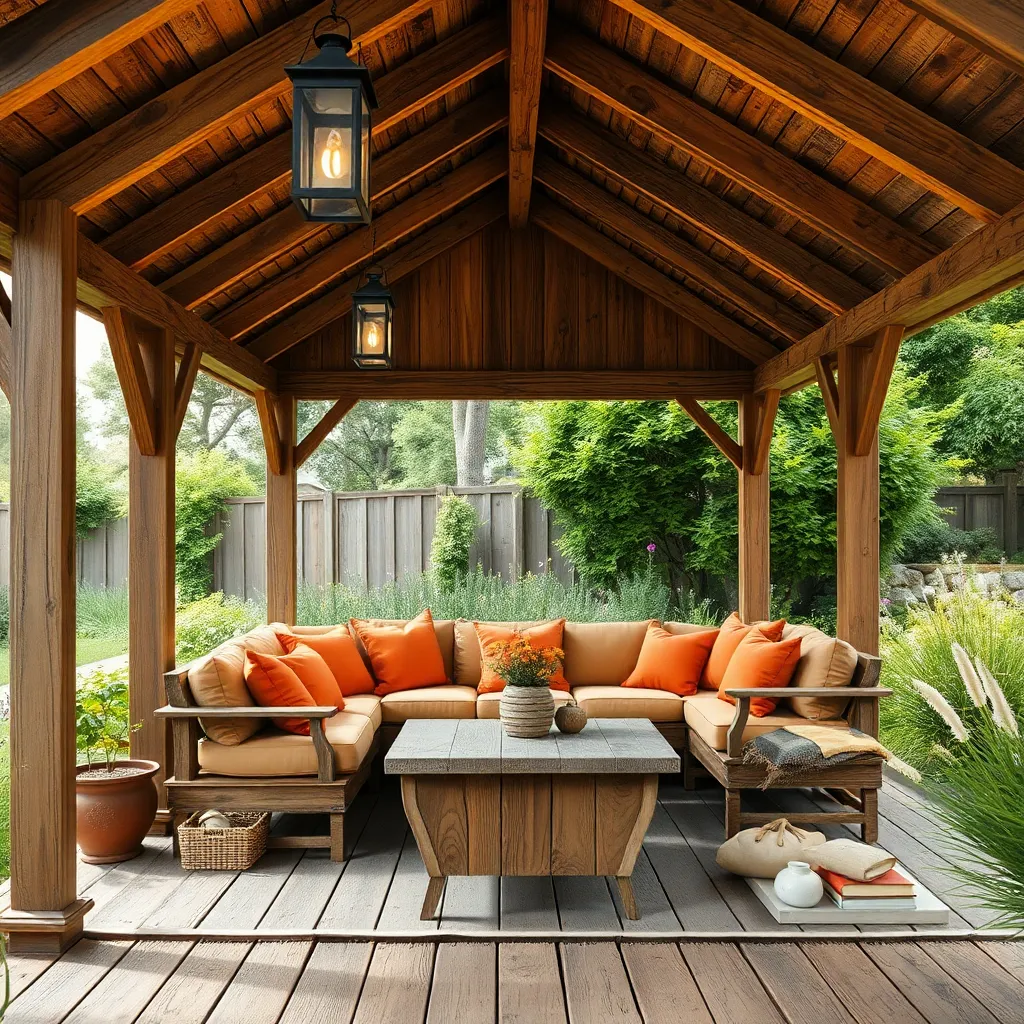
Creating a rustic wooden patio enclosure is a charming way to enjoy the outdoors while staying sheltered from rain. Start with using sturdy, weather-resistant woods like cedar or redwood, which naturally resist moisture and decay. Consider incorporating features such as lattice panels or overhead beams to enhance the rustic look and allow for climbing plants or hanging lanterns. For those new to DIY projects, keeping the design simple with a square or rectangular structure can make the construction process more manageable.
Experienced builders might opt to add more intricate design elements like arched openings or carved details for a personalized touch. Ensure your enclosure is secure by using galvanized or stainless steel hardware, which won’t rust when exposed to rain. For added comfort, consider installing a sloped roof with a transparent material like polycarbonate sheets to let in light while keeping the rain out. Ultimately, the key is to balance aesthetics with functionality, creating a welcoming space that invites you to enjoy your patio rain or shine.
Modern Metal Shelter Solutions
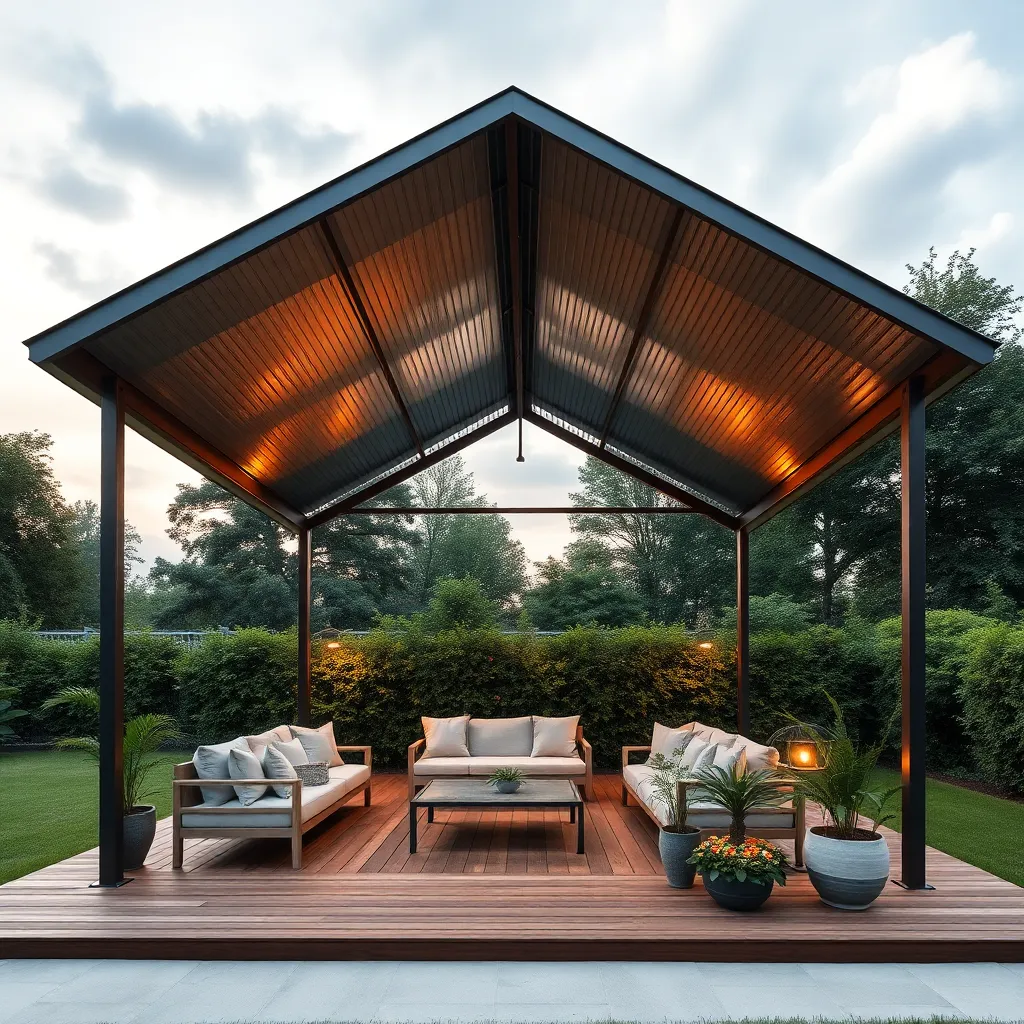
Modern metal shelters offer a sleek and durable solution for your patio, perfect for maintaining style and function during rainy days. Opt for materials like aluminum or steel for their robust and weather-resistant properties. These metals can withstand harsh weather conditions while offering a contemporary aesthetic. For those just starting, consider a pre-fabricated kit which simplifies the installation process with clear instructions and all necessary components. Advanced DIYers might explore custom designs, incorporating features like adjustable louvers for flexible shade and ventilation.
To maximize the utility of your metal shelter, focus on integrating design elements that enhance both comfort and protection. Install gutters and downspouts to manage rainwater effectively, keeping your patio dry. Adding LED lighting strips underneath the shelter can provide ample illumination without detracting from the modern look. For a touch of elegance, consider using powder-coated finishes which offer a range of colors and added protection against rust. By combining these design elements, your metal shelter can become a stylish and functional centerpiece of your outdoor space.
Using Fabric Covers for Patios

Fabric covers are an excellent way to add style and functionality to your patio while providing protection from rain. Consider using durable, water-resistant materials like polyester or acrylic fabric, which are both lightweight and easy to maintain. For a seamless look, opt for a neutral color palette that complements your outdoor décor, or choose vibrant hues to make a bold statement. Installing a retractable fabric awning is a smart option, allowing you to enjoy sunny days and quickly cover up when rain threatens.
To ensure longevity and effectiveness, it’s crucial to properly secure your fabric cover. Use sturdy frames made of materials like aluminum or steel, which provide robust support and resist weather damage. If you’re a DIY enthusiast, you might enjoy creating a custom-sized cover that fits your patio perfectly. Consider adding grommets and hooks for easy attachment and removal, facilitating seasonal changes or cleaning. A well-designed fabric cover not only shelters your space but also enhances its aesthetic appeal, making your patio a welcoming retreat regardless of the weather.
Eco-Friendly Patio Roofing Options
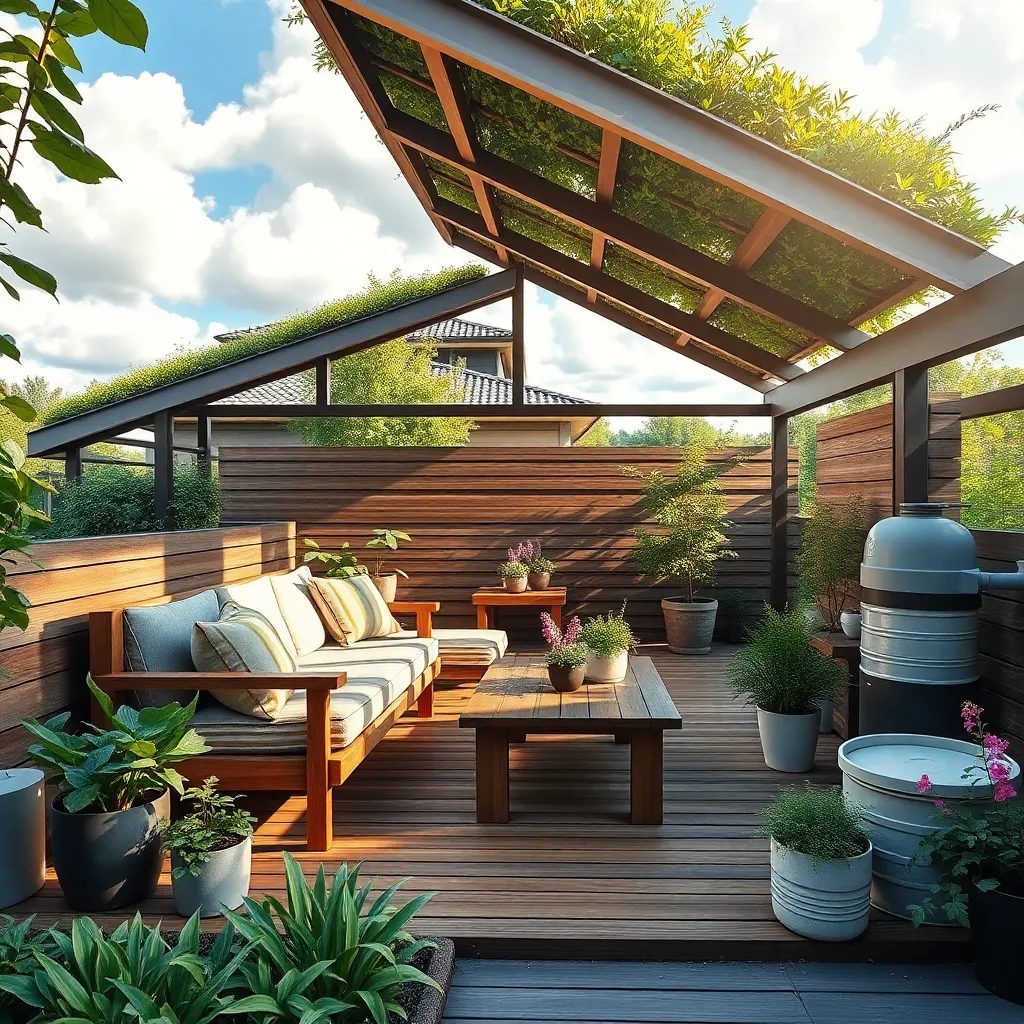
Incorporating eco-friendly patio roofing options not only enhances your outdoor space but also minimizes environmental impact. Consider using sustainable materials like bamboo or recycled metal for your patio roof. Bamboo is a renewable resource that offers a rustic and contemporary look, while recycled metal provides durability and can be creatively designed with various finishes. To maximize natural light while protecting from rain, integrate transparent polycarbonate panels, which are lightweight and offer excellent UV protection, making them an excellent choice for any eco-conscious homeowner.
For a more advanced approach, consider installing a green roof system on your patio. This involves layering waterproof membranes, drainage, and lightweight soil to support plant growth on top of the roofing structure. Not only does this provide excellent insulation and reduce rainwater runoff, but it also creates a lush, natural aesthetic. When planning a green roof, ensure the underlying structure can support the additional weight and consult with a professional for proper installation techniques. Combining these eco-friendly options can transform your patio into a sustainable haven.
Blending Patio Design with Landscape

When blending patio design with your landscape, consider using materials that complement the surrounding environment. Opt for natural stone or weather-resistant wood like cedar, which can seamlessly integrate with the greenery around your yard. Position your patio to take advantage of natural features such as trees for shade or a slight elevation for better drainage. For an added touch, use pavers or tiles that match the color palette of your garden, creating a harmonious flow between the built and natural elements.
For a more advanced design, incorporate elements like built-in planters or a vertical garden wall, which can add both aesthetic appeal and functionality. Consider using a pergola with adjustable louvers to provide shade and protection from the rain, while still allowing for airflow and light. To enhance durability and style, use powder-coated aluminum for the pergola structure, which is both lightweight and resistant to rust. These thoughtful design choices can make your patio a true extension of your landscape, offering a cozy and inviting space for any weather.
Maximizing Space with Lean-To Covers

Lean-to covers are a fantastic way to maximize space while providing shelter from the rain. These structures are typically attached to the side of a building, making them perfect for homes with limited yard space. To construct a lean-to cover, start by choosing durable materials like pressure-treated wood or aluminum for longevity. Beginners can opt for pre-made kits, which often include all necessary components and instructions. For a custom design, ensure the roof pitch directs rain away efficiently, typically at a 15 to 20-degree angle, depending on your local climate.
For added functionality, incorporate elements that enhance both usability and aesthetics. Consider installing clear polycarbonate roofing panels to allow natural light while still providing rain protection. Use retractable side panels or outdoor blinds for additional weather protection and privacy. Advanced DIYers might integrate rainwater collection systems by installing a gutter and downspout along the edge. This not only manages runoff but also provides a sustainable water source for garden irrigation. By carefully selecting materials and features, your lean-to cover can become a practical and stylish extension of your home.
Enhancing Comfort with Windbreaks
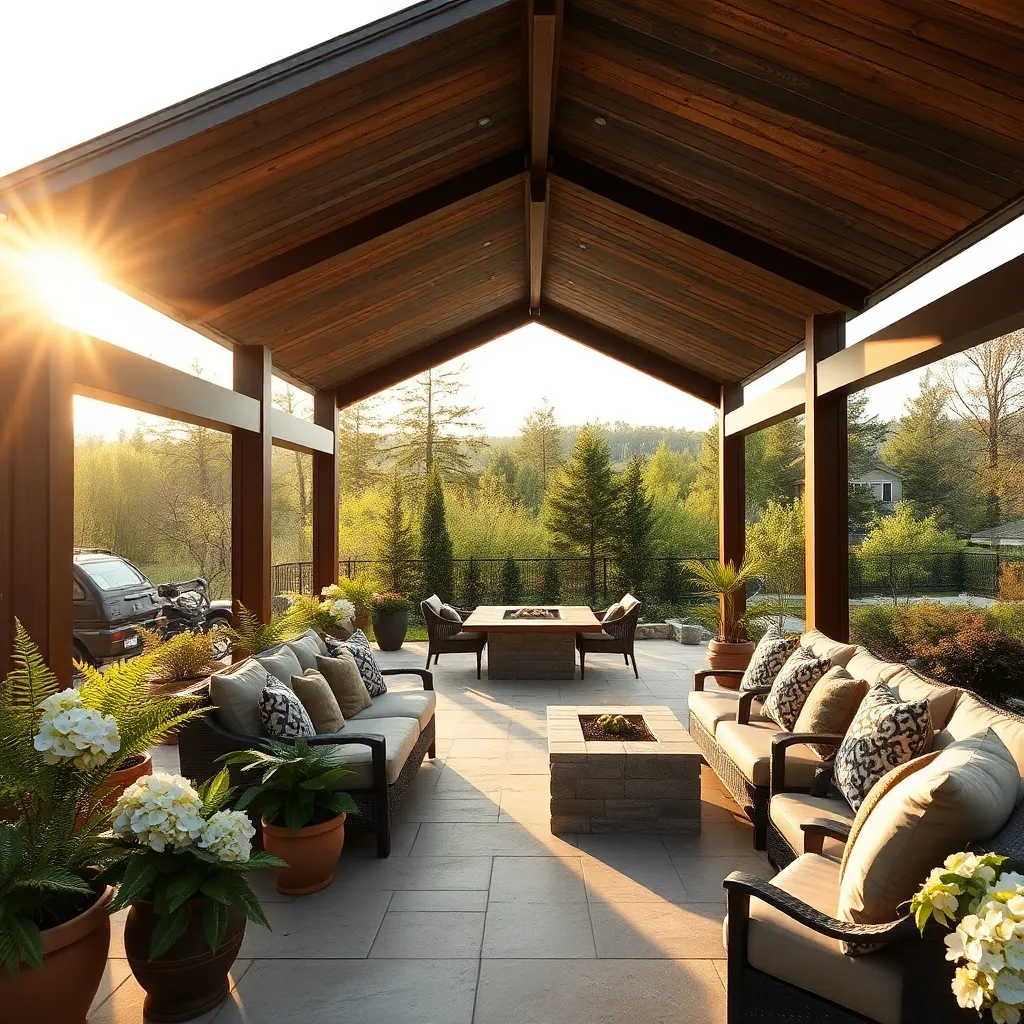
Enhancing comfort on your covered patio during windy days can be achieved by incorporating effective windbreaks. For beginners, consider using natural elements like hedges or shrubs such as boxwood or privet, which can be planted strategically around the patio to buffer wind gusts. Artificial solutions like trellises with climbing plants or lattice panels offer a more structured approach and can be customized to your patio’s design. These not only block wind but also add an extra layer of privacy and aesthetic appeal.
For those looking to implement more advanced solutions, installing glass or acrylic panels provides a sleek, modern windbreak that doesn’t obstruct views. Ensure these panels are at least 5-6 feet tall to effectively reduce wind impact. Consider materials such as tempered glass for durability and safety, especially in areas prone to strong winds. Pair these with retractable awnings or curtains to adjust coverage as needed, optimizing both comfort and flexibility in your outdoor space.
Integrating Heating for Cold Days
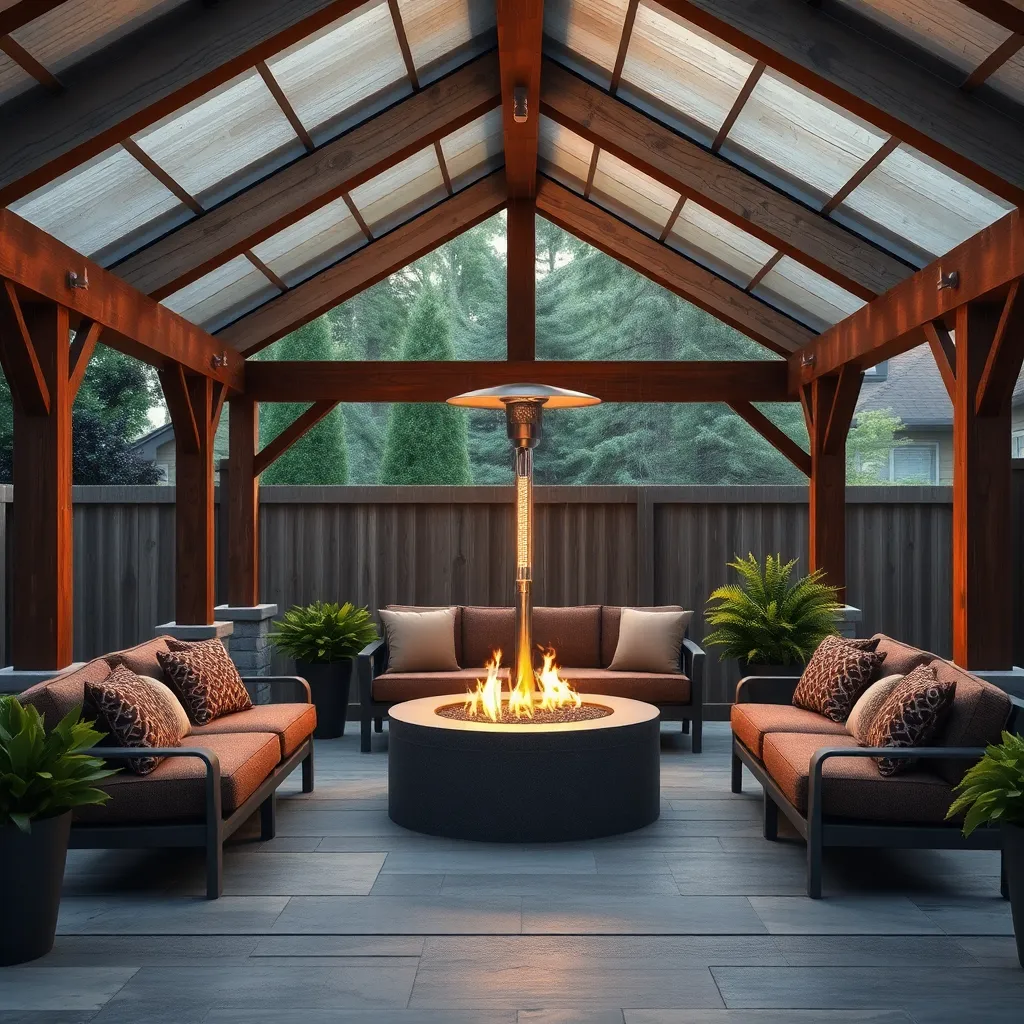
To create a cozy retreat on cold days, consider integrating heating solutions into your covered patio design. Start with portable options like propane heaters or electric infrared heaters, which are easy to install and provide immediate warmth. For a more permanent solution, you can embed radiant heating panels into the ceiling or along the walls of your patio. Ensure you choose weather-resistant materials and place heaters strategically to maximize coverage without obstructing the flow of your outdoor space.
When designing your heating setup, focus on energy efficiency and safety. Opt for heaters with adjustable thermostats and auto shut-off features to conserve energy and maintain a safe environment. For a touch of elegance, incorporate a fire pit or a built-in fireplace using heat-resistant stones or bricks, which not only provides warmth but also serves as a striking focal point. Advanced gardeners might explore installing a smart heating system that can be controlled remotely, allowing you to set the perfect temperature before stepping outside.
Decor Ideas for Cozy Rainy Retreats
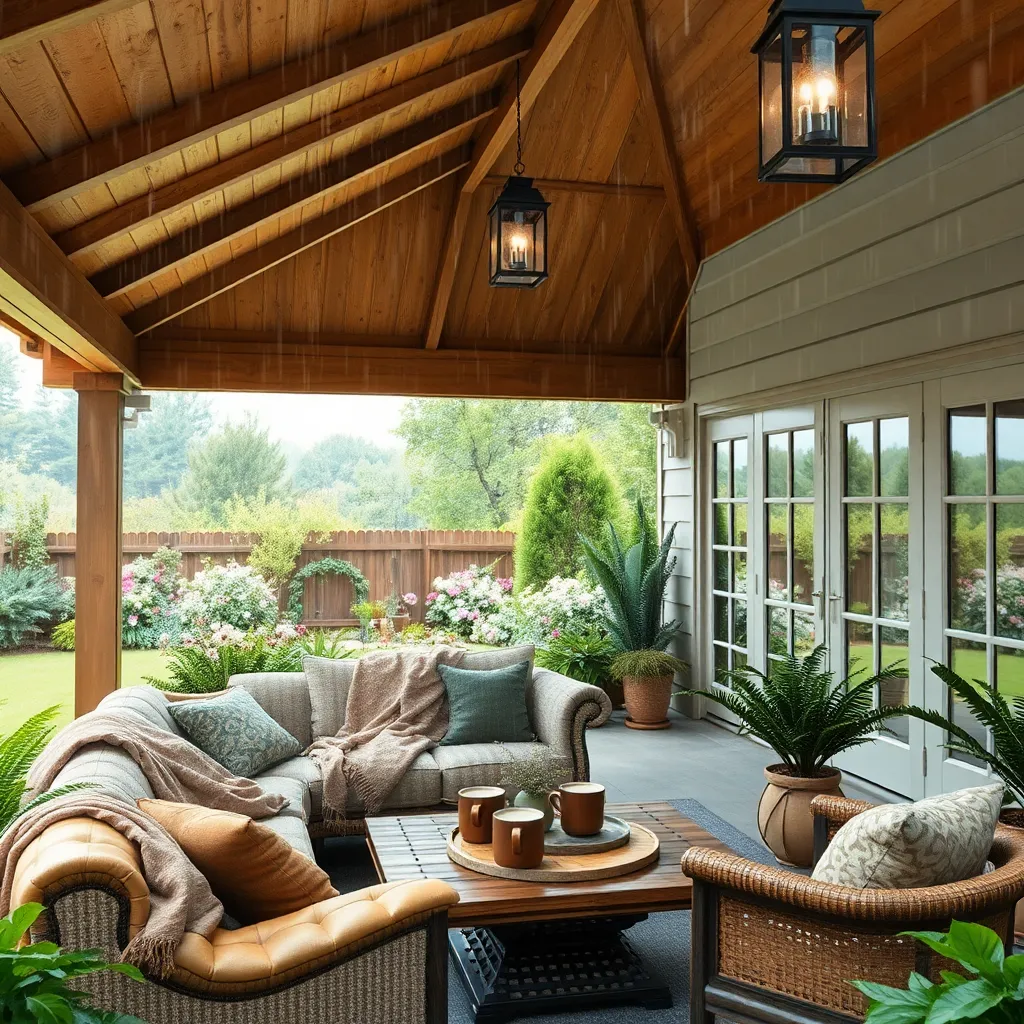
To transform your patio into a cozy rainy retreat, start by incorporating weather-resistant fabrics and textiles. Choose cushions and throws made from materials like Sunbrella or polyester that repel water and resist mildew. For a touch of warmth and style, consider adding an outdoor rug made from polypropylene, which dries quickly and is easy to clean. These fabrics ensure comfort without sacrificing durability, making your space inviting even when the weather isn’t.
Ambiance is key to a cozy retreat, so consider adding soft lighting and natural elements. Hang string lights with shatterproof bulbs around your patio cover or pergola, and use LED lanterns to create a warm glow. Incorporate potted plants or vertical gardens with ferns and shade-tolerant flowers like impatiens for a lush, vibrant feel. For those with more experience, installing a small water feature can amplify the serene atmosphere, providing a soothing soundtrack of gentle water sounds amidst the rain.
Conclusion: Creating Beautiful Outdoor Spaces
In exploring the ’15 Covered Patio Designs for Rainy Days,’ we’ve delved into the essence of creating spaces that nurture relationships. From the warmth of shared outdoor retreats to the innovation of flexible spaces, each design mirrors the adaptability, shelter, and comfort essential in thriving partnerships. We’ve discussed how integrating natural elements can foster harmony, and how personalized touches can strengthen bonds by reflecting shared values and memories. Each concept serves as a reminder that, like a well-designed patio, relationships flourish with care, creativity, and attention to detail.
Now, take a moment to reflect on your relationship’s ‘patio’—consider what elements you can introduce or enhance to weather any storm together. Perhaps it’s time for a cozy movie night under the stars or a heartfelt conversation in a serene nook.
You’re encouraged to save this article for future inspiration. Bookmark it as a reference point to revisit whenever you seek fresh ideas or need a gentle reminder of the nurturing power of shared spaces. Remember, the success of your relationship is a continuous journey, enriched by the thoughtful, intentional creation of environments where love and connection can thrive. Let’s embrace this path with enthusiasm and creativity, knowing the future holds endless possibilities for joy and togetherness.

